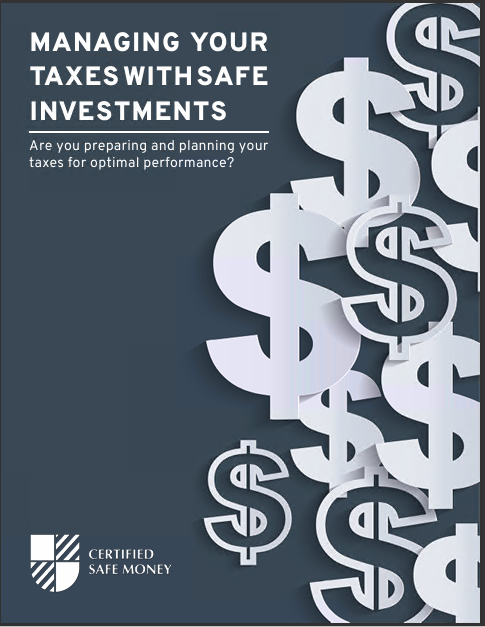Key Takeaways
-
Annuity rates are not fixed; they rise and fall depending on interest rates, inflation, and economic conditions, which directly affect the income you can expect in retirement.
-
By understanding what drives annuity rate changes, you can make informed decisions about when to purchase an annuity and how to align it with your long-term retirement income needs.
Understanding the Nature of Annuity Rates
Annuities are designed to provide a steady income stream, often in retirement, but the amount of income they deliver depends heavily on prevailing annuity rates at the time of purchase. Annuity rates represent the return you receive in exchange for your premium payment. These rates are influenced by broader economic conditions, making them subject to fluctuation over time.
The shifts in annuity rates are not random. They follow predictable patterns linked to interest rates, bond yields, and other economic variables. Knowing why annuity rates move can help you determine whether to act now or wait for conditions that may produce a more favorable income outcome.
The Role of Interest Rates in Annuity Fluctuations
Interest rates serve as one of the primary drivers of annuity rates. When the Federal Reserve raises interest rates, bond yields generally increase. Since annuity providers invest heavily in bonds, higher yields mean they can offer better annuity payouts.
-
When interest rates rise: Annuity rates typically increase, giving you more retirement income for the same premium.
-
When interest rates fall: Annuity rates tend to decrease, lowering the guaranteed income you can expect.
In 2024, interest rates remained relatively high compared to prior years, which supported stronger annuity payouts. Now in 2025, any shifts by the Federal Reserve to ease or tighten monetary policy continue to ripple through annuity markets.
How Inflation Shapes Annuity Rates
Inflation reduces the purchasing power of your income over time. If inflation trends upward, it affects both the value of annuity payments and the structure of the products offered.
-
High inflation periods: Insurers may offer higher initial payouts to offset rising costs, but the long-term value of those payments may still erode.
-
Low inflation periods: Payments may hold their purchasing power better, but annuity rates might be lower because bond yields are suppressed.
In 2025, inflation is moderating compared to the spikes seen in earlier years. This moderation creates an environment where annuity rates stabilize, but retirees still need to evaluate whether fixed or inflation-adjusted annuities better protect their future purchasing power.
Longevity Trends and Mortality Assumptions
Annuity providers also factor in life expectancy when setting rates. The longer people are expected to live, the more years an insurer expects to make payments. This lowers the annual payout offered.
-
Longer life expectancy: Reduces annuity rates because payouts are spread across more years.
-
Shorter life expectancy assumptions: Increases annuity rates since payouts are concentrated into fewer years.
As medical advancements and healthier lifestyles extend lifespans, annuity providers continue adjusting their assumptions, which gradually influences the level of guaranteed income offered.
Market Conditions and Economic Cycles
The broader economic climate also impacts annuity rates. During periods of strong economic growth, insurers benefit from higher investment returns, which can support better annuity payouts. During recessions or financial market downturns, insurers adopt more conservative assumptions and may reduce offered rates.
In the years leading up to 2025, the economy experienced both inflationary pressure and tighter monetary policies. Now, with stabilization efforts underway, annuity rates reflect the cautious optimism insurers hold about future investment returns.
Timing Your Annuity Purchase
Since annuity rates change with economic cycles, timing plays a critical role in how much retirement income you lock in. Unlike market-based investments, once you purchase an annuity, your payout rate is fixed based on the prevailing conditions.
-
Buying during high-interest-rate periods can secure stronger payouts.
-
Purchasing during low-rate periods may lead to smaller payouts, though waiting carries the risk of missing income during the delay.
-
Staggered purchases over time allow you to benefit from rate changes while reducing the risk of committing everything at once.
For 2025 retirees, carefully monitoring rate movements and inflation expectations can help determine whether to act now or wait for potentially more favorable conditions.
Fixed vs. Variable Rate Impact
The type of annuity you consider also influences how rate changes affect your income:
-
Fixed annuities: Directly tied to current interest rates and bond yields. Your payout is predictable but sensitive to timing.
-
Variable annuities: Linked to market performance. Market conditions, rather than prevailing bond yields, determine long-term returns.
-
Indexed annuities: Blend features of both, offering some protection from downturns while benefiting modestly from market upswings.
In all cases, understanding how underlying market conditions drive annuity performance is crucial before making a long-term decision.
Regulatory and Policy Considerations
Government regulations also influence annuity rates. Rules surrounding insurer reserves, solvency requirements, and consumer protections shape how much flexibility companies have in setting payout rates.
For example, in 2024, regulatory adjustments around capital requirements created an environment where insurers had to maintain larger reserves. This influenced pricing and indirectly shaped the annuity rates available in 2025. Policy changes around retirement security and financial products can continue to alter the landscape.
The Psychological Impact of Rate Changes
Annuity rate fluctuations do not just affect your income—they influence your perception of financial security. When rates are high, retirees feel more confident in their ability to cover long-term expenses. When rates fall, there can be hesitation about committing funds, leading some to delay decisions.
Recognizing that timing markets perfectly is impossible, your focus should remain on aligning annuity purchases with your retirement goals rather than chasing temporary peaks in rates.
Long-Term Outlook for Annuity Rates
Looking ahead, annuity rates will continue responding to cycles of interest rate adjustments, inflation movements, and demographic trends. In 2025, stability in inflation and cautious optimism about economic growth suggest that annuity rates may remain relatively steady compared to the volatility of the past few years.
However, you should expect ongoing shifts as markets respond to global economic pressures, central bank policies, and evolving longevity expectations. Flexibility and informed decision-making will remain your best tools.
Aligning Annuity Decisions With Your Retirement Plan
Understanding how annuity rates rise and fall allows you to better integrate them into your overall retirement strategy. Consider how annuities fit alongside Social Security, retirement accounts, and other income sources.
-
If you value guaranteed income regardless of rate fluctuations, securing a portion of income through annuities can provide stability.
-
If you are comfortable with some risk, diversifying timing and types of annuities may help capture favorable conditions while reducing exposure to downturns.
Ultimately, your retirement income strategy should balance security with flexibility, acknowledging that annuity rates will always be influenced by factors beyond your control.
Building Confidence in Your Next Step
Annuity rate changes can feel complex, but they become more manageable once you recognize the forces behind them. By paying attention to interest rates, inflation, longevity trends, and broader economic conditions, you can position yourself to make smarter, more confident retirement income choices.
For personalized support, consider reaching out to a licensed professional listed on this website. They can help you analyze current annuity rates, evaluate timing strategies, and ensure your decisions align with your overall retirement goals.












